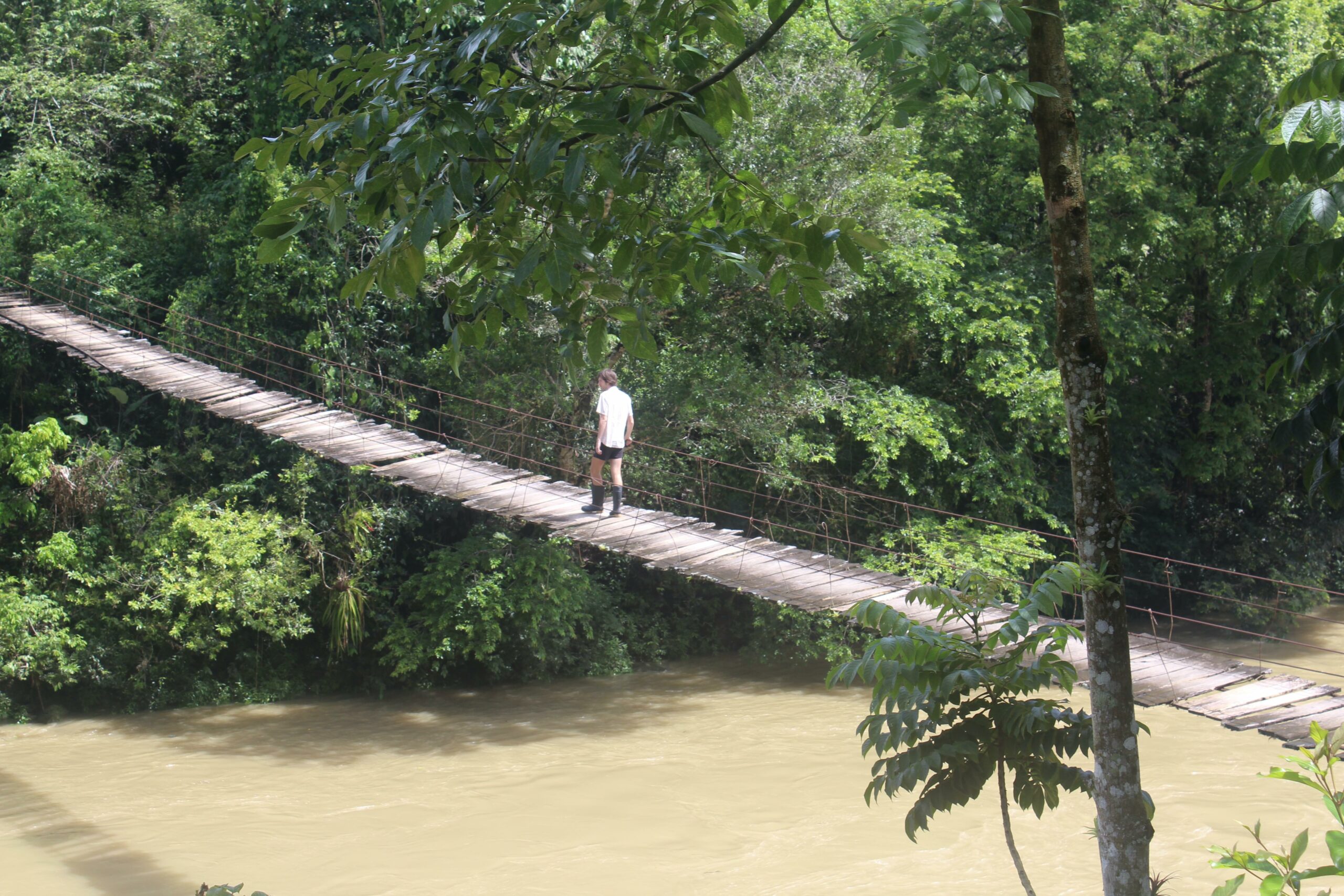
Have you ever looked at a graph and found it difficult to visualize what is being said? When translating and consolidating complex data sets, graphs are a necessity. But some researchers have been exploring alternative, more viewer-friendly ways of representing their data to reach larger audiences.
Benjamin Keenan is a PhD candidate in Biogeochemistry at McGill who has been studying Mayan civilizations. Most recently, he has turned towards the video format to depict his findings. Using real geochemical data from the archaeological site of Itzan, Guatemala, and computer-generated artwork, Keenan produced a video that brings his findings to life.
A meditative medium

The resulting high-fidelity visualization represents the changing population, vegetation, and climate of the ancient Maya over 6,000 years. Yet, as viewers will immediately notice, the ten-minute long video is also meditative and peaceful. That’s because Keenan and his team wanted to evoke an emotional response that invites viewers to think about environmental history.
“The scenes cut from peaceful and tranquil to the arrival of humans and crackling fire, [which] can be thought-provoking: humans have previously had to deal with similar environmental problems to the ones that we have to deal with today,” says Keenan.
Keenan’s findings suggest that the ancient inhabitants of Itzan dealt with environmental problems in various ways, “possibly through novel agricultural and water management strategies, to successfully sustain large populations, and to construct stone cities and beautiful works of art.”
First DIALOGUE Grant for the Faculty of Science
Over the course of his time at McGill, Keenan has been especially drawn towards studying the Maya. His research has brought him to conduct field work in Central America, visit various archaeological and natural sites, use stanols (organic molecules found in human and animal waste) to chart major Maya population changes, and even earn a SciArt200 award earlier this year (Keenan’s collaborator on the winning piece, digital artist Tim Thomasson, also developed the artwork for the Itzan video).
Recently, the Earth and Planetary Sciences PhD student was awarded a DIALOGUE grant from the Fonds de recherche du Québec to produce the video – he is the first recipient (student or faculty) at the McGill Faculty of Science. The grant is awarded to science communications projects that promote research to a wider audience.
Program Advisor Jacky Farrell from the Office of Science Outreach shares that the project “brings art and science together in a way that speaks to people, as shown by the overwhelming response he has received from local and international audiences.” She mentions that Keenan’s video also serves as a model of creativity for other researchers.
From sediment cores to video art
The video has since been shown at over ten unique exhibitions and conferences, including the Athens Digital Art Festival, the Earth Futures Festival, the Sardinia Film Festival, and SIGGRAPH. For some showings, Keenan recorded a video to explain and describe the process and accompanied the video with a textual description.
“The video shows how the archaeological site of Itzan changed over time based on data extracted from a lake sediment core from the lagoon adjacent to the ancient population center. Extracting organic molecules from the cores has revealed how humans interacted with their environment over 6000 years – they show how human population fluctuated in the context of climate and vegetation change, as well as fire use,” Keenan explains.
Making data accessible
Creative ways of depicting data are beneficial for researchers and a general audience, but they also allow for complex research to re-enter the classroom. Megan Phillips, Science Outreach Educator with the Office of Science Outreach, shares that she is working with Keenan to help him develop a lesson plan for high schools. Students will use Keenan’s project as a model to express their voices through art and raise awareness about crucial environmental issues, all while practicing their skills in science communications and learning about archaeology and environmental sciences.
“Alternative mediums of data visualization allow for stimulating discussions with different kinds of people. I think it’s important for researchers to come up with ways of communicating information and not let it end up stuck behind a paywall, which can often happen in academic journals,” Keenan suggests.
The Sustainability Projects Fund (SPF) supported the creation of the video. The SPF creates opportunities for the McGill community to actively engage in sustainability initiatives on campus. Watch the Itzan video below.

Great work – a big congratulations to Benjamin and Tim!
Curious whether the fires were thought to have been set purposely to clear the jungle or whether they may have occurred randomly but then resulted to clearings that people moved into? Having visited some of the classic mayan sites (but not this one) I am also curious whether people may have been attracted to these sites for non-obvious reasons, such as proximity to sacred sites such as cenotes. Some of them seem pretty remote from obvious things such as rivers.